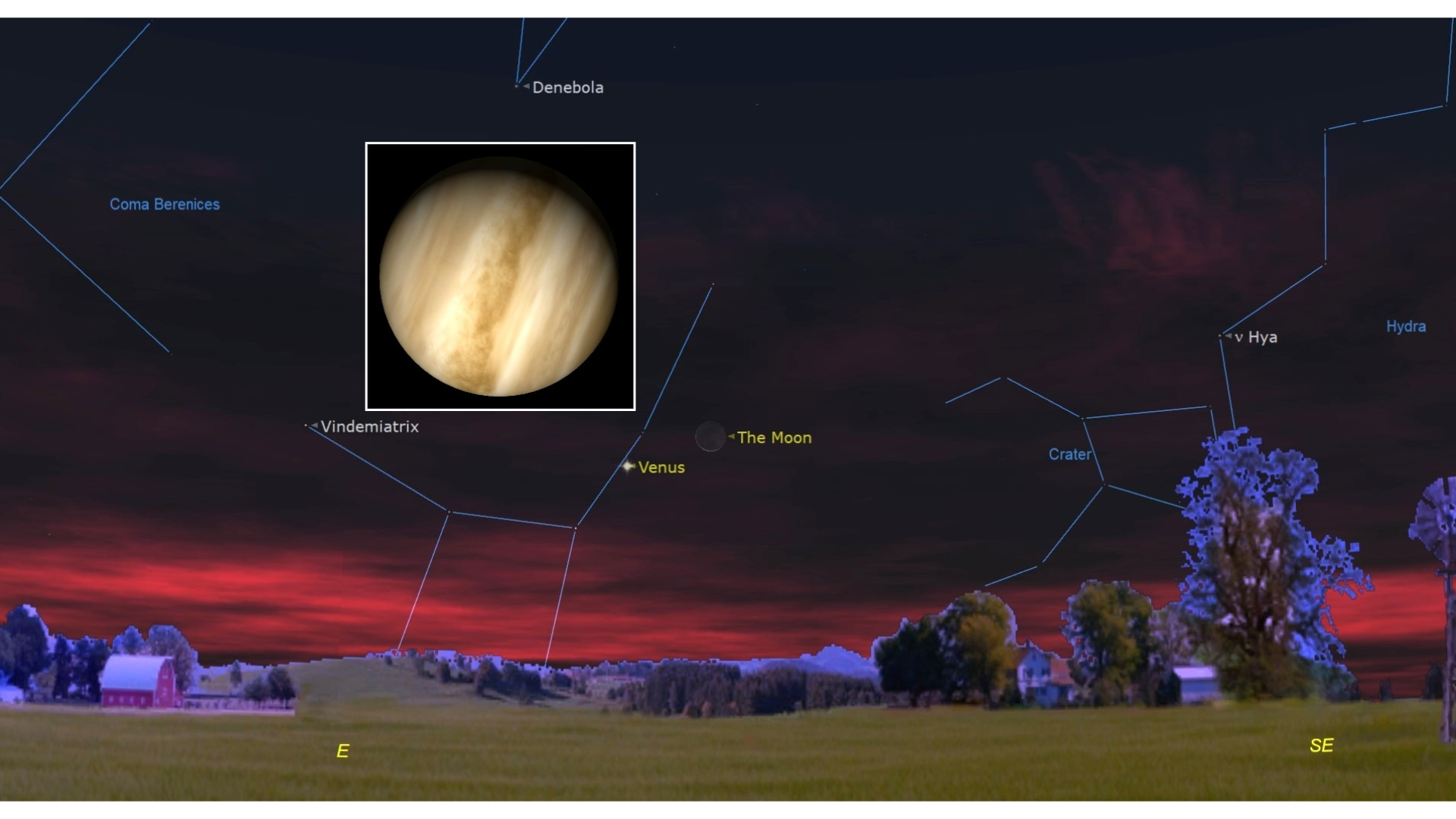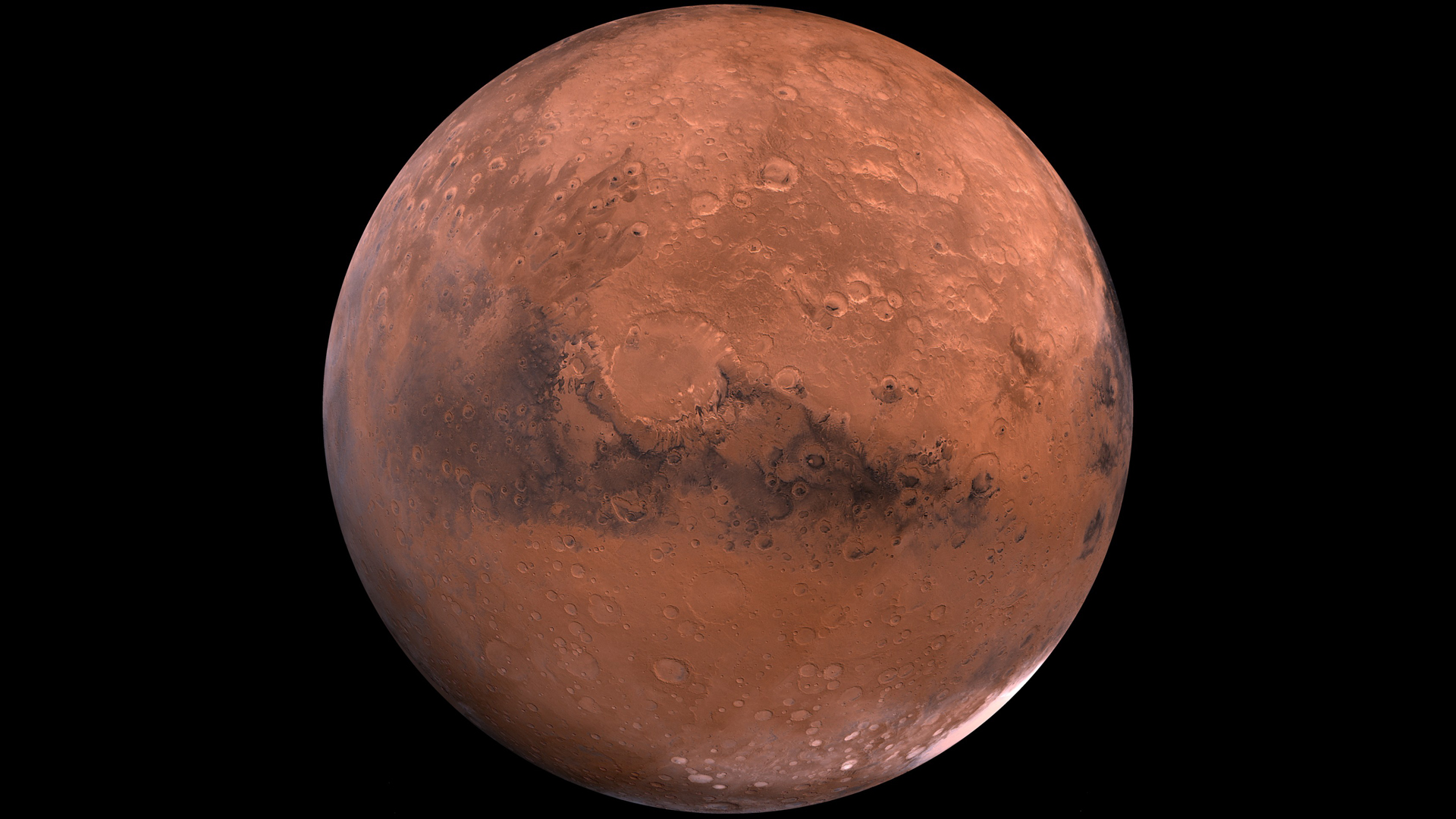The moon and Venus take a morning stroll through the sky on Oct. 19

A pairing-off of the brightest planet and a slender crescent moon will be the chief celestial attraction in the dawn sky early on Sunday morning.
If you look low toward the eastern horizon about 60 to 75 minutes before sunrise (make sure there aren't any trees or buildings to obstruct your view) you should readily catch sight of the very narrow (4 percent illuminated) crescent moon. And situated only 4 degrees to its left will blaze Venus. Of course, what you will be seeing is merely an illusion of perspective. The moon — our nearest neighbor in space — will be situated about 247,000 miles (398,000 km) from Earth, while Venus is nearly 600 times more distant at 147 million miles (236 million km) away.
October provides our last chance to get a good view of it against a reasonably dark sky until next April. By December it will be gone. Currently, Venus remains spectacular at magnitude -3.9,making it by far the brightest object in the sky after the sun and the moon. Yet, in spite of its lustrous appearance, it's disappointing through a telescope, displaying only a tiny, nearly full disk of little interest to telescopic observers. And Venus is sinking closer to the eastern horizon with each passing day, since it's heading behind the sun as seen from our Earthly vantage point.
What does it mean?
These two celestial objects, moon and Venus — the brightest of the nighttime sky — will form a widely spaced, albeit eye-catching gathering for early risers on Sunday. Most observers will likely just give them a cursory glance, but a pairing such as this may have made a far greater impression on ancient skywatchers.

The Celestron NexStar Evolution 9.25 is one of the best telescopes you can buy. Boasting a 9.25-inch aperture and a whole host of accessories, this is top-of-the-range gear. The remote operability means it is easy to track celestial objects from your phone. Add to that a powerful lithium-ion battery, allowing for ten hours of uninterrupted stargazing.
Ancient humans probably took note of the fact that the planets — themselves resembling bright stars — had the freedom to wander in the heavens, while the other "fixed" stars remained rooted in their positions. This ability to move seemed to have an almost magical, god-like quality. And evidence that the planets came to be associated with the gods lies in their very names, which represent ancient deities from Roman and Greek.
Skywatchers thousands of years ago must have deduced that if the movements of the moon and planets had any significance at all, it must be to inform those who could read celestial signs of what the fates held in store. Indeed, even to this day, many newspapers carry horoscopes, catering to those who firmly believe that the changing positions of the sun, moon and planets can have a decided effect on the destinies of individuals and nations on the Earth.
But as for any chance that this moon/Venus rendezvous might have any influence on our lives in any way, forget it. No astrologer can predict from planetary alignments or any other celestial configuration when a specific event, good or bad, will occur here on Earth.
Breaking space news, the latest updates on rocket launches, skywatching events and more!
In any case, it will still be worth a look.
Joe Rao serves as an instructor and guest lecturer at New York's Hayden Planetarium. He writes about astronomy for Natural History magazine, Sky and Telescope and other publications.

Joe Rao is Space.com's skywatching columnist, as well as a veteran meteorologist and eclipse chaser who also serves as an instructor and guest lecturer at New York's Hayden Planetarium. He writes about astronomy for Natural History magazine, Sky & Telescope and other publications. Joe is an 8-time Emmy-nominated meteorologist who served the Putnam Valley region of New York for over 21 years. You can find him on Twitter and YouTube tracking lunar and solar eclipses, meteor showers and more. To find out Joe's latest project, visit him on Twitter.
You must confirm your public display name before commenting
Please logout and then login again, you will then be prompted to enter your display name.
